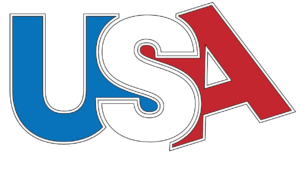Recently, I wrote about how rising tariffs are driving up material costs and squeezing roofers’ profit margins. Afterward, someone reached out and said, “Okay, but what’s the solution?”
I’ve thought a lot about that question, and the truth is, there’s no magic fix for rising costs. You can’t control the price of shingles or dictate what insurance carriers are willing to pay. But what you can control is how you navigate the claims process. And that’s where so many contractors are leaving money on the table—because they don’t fully understand how to work within the system that insurance carriers have created.
Supplementing isn’t about fighting the insurance company. It’s about presenting your case the right way. Too often, I see roofers throw a list of additional items at an adjuster, hoping some will stick. But that’s not how it works. You have to speak the insurance carrier’s language. Every supplement should be structured as a professional, detailed explanation—not a demand, not an argument, but a justification.
Most insurance adjusters aren’t roofers. They don’t understand the true scope of labor involved in tearing off multiple layers, dealing with steep slopes, or replacing decking. That’s your job—to document, explain, and educate. The way you present your supplement matters just as much as what you’re supplementing for.
For example, if you’re asking for steep charges, don’t just say, “This roof is steep, add the line item.” Instead, explain the additional safety measures required, the harnesses and tie-offs your crew has to use, the extra labor involved in moving materials up and down that slope. Make it clear why it’s a necessary cost—not an upcharge.
When you approach supplements this way, you shift from just being another contractor asking for more money to being a professional who understands the process and works with the insurance carrier to justify fair pricing.
But here’s where many roofers struggle: knowing when to push and when to shift gears. Not every adjuster is going to be reasonable. Some will dig in and refuse to budge, no matter how well you present your case. That’s when you have to decide—is it worth escalating? Should you bring in an engineer? Should you take it up the chain? Or is this one of those battles where you take what you can and move on?
This balance is what separates the roofers who consistently maximize their supplements from those who get stuck in endless back-and-forth fights that go nowhere. It’s not about being aggressive—it’s about being strategic.
If you haven’t read Never Split the Difference by Chris Voss, I highly recommend it. Voss, a former FBI hostage negotiator, breaks down negotiation strategies that are just as useful i n supplementing as they are in high-stakes hostage situations.
One of the biggest lessons from the book is the principle that “No deal is better than a bad deal.” Too often, roofers let frustration push them into accepting less than they deserve just to move forward. But what if, instead of giving in, you leveraged tactical empathy and strategic questioning to guide the adjuster toward your pricing?
Your words have power. If you put someone on the defensive, you’ll hit a wall. Success comes from steering the conversation as a collaborative effort—especially when dealing with someone you may work with again.
At the end of the day, supplementing isn’t just about increasing a claim. It’s about making sure you’re paid fairly for the work you’re already doing. If you don’t understand how to navigate the insurance process—how to present your pricing in a way that aligns with their system—you’re leaving money on the table. And in today’s market, with prices rising and margins tightening, that’s money you can’t afford to lose.
So, are you structuring your supplements the right way? Are you taking the time to review each claim that you have and break down where you can work with insurance to get better margins for your job? Are you taking the proper pictures that insurance needs and providing the right documents to ensure that the process is smoother? Are you presenting your pricing as a professional, or just throwing numbers at an adjuster and hoping they stick?

